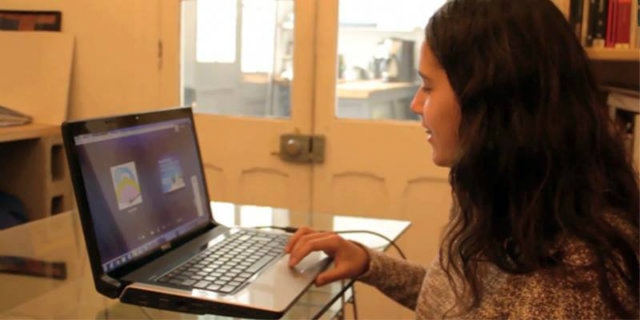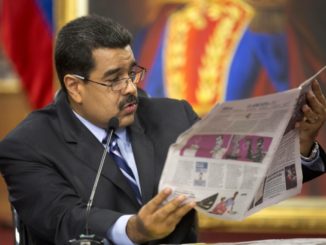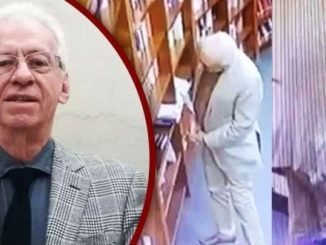
Stephen Borunda/Special to The Santiago Times
Lissette Orozco’s astonishingly personal documentary is a work of an intimate scale rarely seen in cinema. In El Pacto de Adriana (Adriana’s Pact), Orozco investigates her aunt’s shameful work for Augusto Pinochet’s secret police called the DINA (Dirección de Inteligencia Nacional or the National Intelligence Directorate). However, the interfamilial nature that makes the film so compelling is simultaneously what likely makes it fall just short of being a truly noteworthy film in the vein of the other political documentaries about Chile’s dictatorship such as those crafted by Chilean auteur Patricio Guzmán.
As a youth, Orozco adored her Aunt Adriana Rivas or “Chany,” as her family affectionately calls her. Chany would regularly visit from Australia and during her trips to Chile she would bring gifts for the family. As the life of the party, Chany was an easy role model for Orozco. In 2006, these dynamics changed when Chany was arrested in Chile for her work with the DINA; she was subsequently released shortly after. Upon returning to Australia, Chany keeps in touch with her family in Chile via Skype. This form of technological communication is what molds the film’s dramaturgy; Skype interviews between Orozco and Chany are intercut with in person interviews between Orozco and family members or experts throughout the film.
For the majority of the film, Chany entreats Orozco to believe the story that she was just a benign secretary for the DINA who had no access to any of the information regarding the tortures and human rights abuses carried out under the military junta. In fact, Chany agrees to cooperate with the creation of the film so she could prove her innocence and show that Chile’s recent efforts to have her extradited from Australia are ill-founded. Chany maintains this stance even after the publication of her interview with a newspaper in which she states that torture was necessary tool of the Pinochet regime to defeat the communist forces in Chile. Chany eventually does concede that she knew of the abuses at her work but proclaims that she was not involved and that she didn’t say anything out for fear for her family’s safety.

As Orozco continues to investigate her aunt, the evidence mounts that she was well aware of the DINA’s abuses and that she was intimately involved in heinous acts of violence. Orozco’s studies of the roles of female DINA agents, her interviews with lawyers, eyewitnesses, and journalists like Javier Rebolledo make it all too clear to the audience that Aunt Chany has blood on her hands. Orozco makes an admirable attempt to understand the suffering of her fellow Chileans as she attends a gathering at the Museum of Memory and Human Rights here in Santiago. Such shots of dolor there eerily juxtapose with the earlier shots from Orozco’s family parties at which Chany was the star.
Inopportunely, as the documentary reaches its coda the film begins to falter, in part, due to the personal nature of the film. Spectators never really understand the evidence behind the Chilean government’s desire to have Chany extradited back to Chile from Australia – an error that lies with Orozco.
Additionally and more significantly, Chany’s constant defenses and Orozco’s frequent unwillingness to vehemently denounce Chany’s lies will likely be insipid and lethargic to many spectators. By the film’s denouement, the audience might begin to suspect that Orozco has partially compromised her film by her decision to be the sole narrator and investigator (so far as we know) for the documentary and not having another creative force function as more of an impartial judge. Orozco’s respect for her family is certainly admirable but her inability to unapologetically demand the truth from her aunt is something that may not sit right with many spectators. Instead, Orozco opts to simply stop talking with her aunt for a time during the making of the film.

In an essay featured in the recent publication of Violeta Parra’s poetry entitled Poesía, Chilean academic Rosa Betty Muñoz reminds us that Parra as an artist “had the courage to burn herself till only ashes remained so we wouldn’t have to.” This idea that artists must destroy old notions of self and exhume something forged from the fires is not a novel concept. Philosopher Friedrich Nietzsche and Russian filmmaker Andrei Tarkovsky expressed similar imperatives that artists leave behind something of themselves in the creation process. Perhaps, if Orozco had followed this advice and been more forceful and less ambiguous with her findings and feelings – especially given the deplorable nature of her aunt’s actions – then audiences might have been left with a truly memorable film. Regardless, a film worth seeing and discussing remains. El Pacto de Adriana opened last week in theaters across Santiago.



